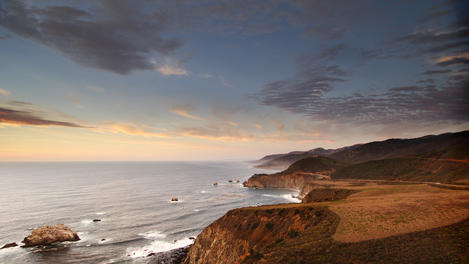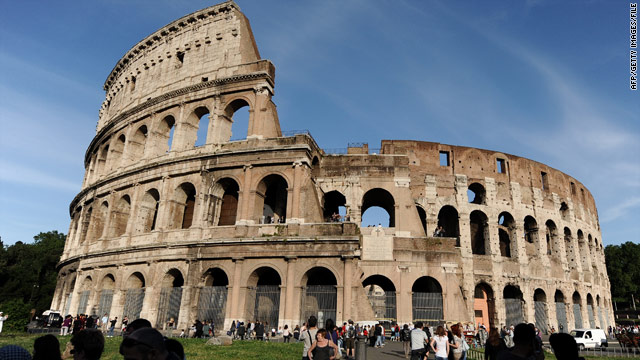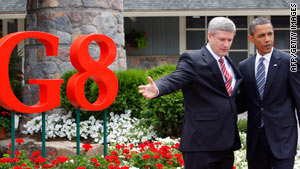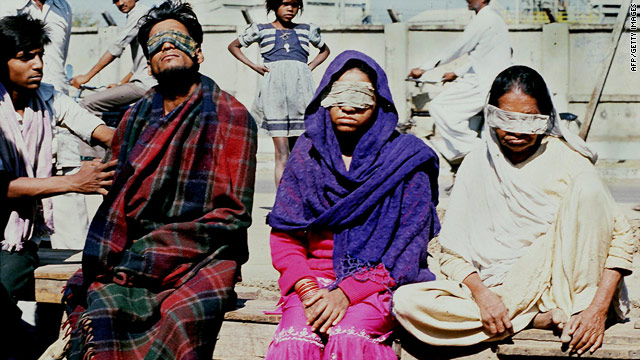To give you an idea of the response in India, here are the seven comments following a report on the bashing in an Indian media outlet (Press TV):
Sutapas: It was not only convicts that the Brits shipped to Australia. They also transported shiploads of prostitutes. The Aussies are descendants of criminals and whores. My brother was punched quite unprovoked by an Aussie when he was on holiday in Tokyo years ago.
holocaust: The real war is not between neighboring states like palestine-israel, nor the real threat about nuclear N Korea or Iran or Palestine or china support taliban, but the real threat is rascism that has been conferred by the white people
S. Balu: So called "australia" is made of ILLEGAL EUROPEAN IMMIGRANTES who have STOLEN ABORIGINE LAND! TIME INDIA NUKED IT AND THREW THESE ILLEGAL IMMIGRATES INTO SEA thus Indians who are living in SQUOLAR IN INDIA can have NEW LIFE!
Shirin: Superior cultures of the ancient world such as that of Persian peoples affected the conquerors. Mongols & other savages failed to cause depravity of Iranian peoples` cultures instead the conquerors were gradually affected by the highly refined cultures of Iranians they came in contact with. However, this was not the case with the feeble Anglo-Saxon people as they were lacking any significant moral refinement to persevere the onslaught of degeneracy.
Shirin: The root causes of Anglo-Saxon corruption of moral values goes back to 1100 years ago. Anglo-Saxon culture & dispositions have long manifested the degeneracy of Viking culture of savagery, sadism, looting, colonizing & enslaving with which they came in contact with & which they succumbed to.
shirin: No more than about 12,000 convicts were shipped to Australia. There are many good and wonderful people in Australia, but there are too many racist bigots there specially in less multicultural areas such as the Queensland state. This is more a case of Anglo-Saxon degeneracy.
Anarchy: Australia is a former penal colony. So, all Australians are descendants of former British convicts. What else do you expect from such a country? Australia is bloody racist.
Our own media weren't that much better. Here is a transcript of an ABC report on the bashing of Kanan Kharbander (the reporter being Guy Stayner):
KANAN KHARBANDA, VICTIM: It was a Sunshine taxi rank, and some of the hooligans approached me. They asked for a dollar. And I said, “I don't have any dollar with me.” I showed the pockets of my trousers, and they start beating me ...
GUY STAYNER: Little wonder these victims support the student protests that blocked Flinders Street and battered Melbourne's reputation around the world.
INDIAN REPORTER: It seems that there has been another racist attack, or at least a hate crime, perpetrated against another Indian ...
GUY STAYNER: With the spotlight on Australia, and the country's massive international education industry at risk, politicians are finding their voice.
KEVIN RUDD, PRIME MINISTER: I speak on behalf of all Australians when I say that we deplore and condemn these attacks. These are senseless acts of violence.
JOHN BRUMBY, PREMIER: There is no doubt that some of the assaults which have been committed against members of the Indian community have been racially based ...
GUY STAYNER: This week the State Government fast-tracked its hate crime legislation.
ROB HULLS, ATTORNEY-GENERAL: What we're gonna do is amend the Sentencing Act to give guidance to our judges in relation to sentencing practices for crimes that are specifically based on hate, prejudice, against people based on their race, their religion, their ethnic origin or their sexual orientation.
GUY STAYNER: How important was it to be seen to be doing something about this issue?
ROB HULLS: Well I think it's very important to send a message to the community, whenever and wherever we can, that we are a friendly, open, caring, multicultural community, and hate based crimes will not be tolerated.
I love the last bit. The implication is that white Australians are violent and aggressive and that it's multiculturalism which creates a friendly, open, caring community. Problem is that the facts just don't fit the fantasy. Kanan Kharbanda was attacked in Sunshine, one of Melbourne's most multicultural suburbs. And it seems he was attacked by a Sudanese gang.
Four men were charged with the attack. Three were too young to have their names released. But the eldest one has just been sentenced for the crime. His name is Majang Ngor, he is a Sudanese refugee, and far from being sentenced heavily for committing a hate crime, he's walked out of court with a suspended sentence:
The judge suspended the jail term for 15 months and ordered Ngor to do 40 hours of community work, saying the greatest public benefit would come from his rehabilitation.



















 Chinese tourist enjoying the ride. Image by Daniel McCrohan
Chinese tourist enjoying the ride. Image by Daniel McCrohan























